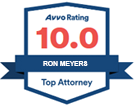Distracted driving is one of the leading causes of car accidents across the United States, including in Washington. In today’s fast-paced world, distractions such as texting, eating, or even adjusting the radio can lead to catastrophic consequences on the road. For victims of distracted driving accidents, understanding how liability is determined is crucial to pursuing a successful claim.
This blog explores how distracted driving impacts car accident liability in Washington, the legal standards for proving fault, and the steps you can take to protect your rights after an accident.
What Constitutes Distracted Driving?
Distracted driving refers to any activity that diverts a driver’s attention away from the primary task of operating a vehicle. The three main types of distractions are:
Visual Distractions
These involve taking your eyes off the road, even for a few seconds:
- Texting or reading messages on a phone
- Checking GPS or adjusting a navigation app
- Looking at a passenger or child in the backseat
- Searching for items in the vehicle, such as a dropped phone or bag
- Gazing at roadside distractions, such as billboards or accidents (rubbernecking)
- Scrolling through music playlists or adjusting streaming apps
- Reading paperwork or maps while driving
Manual Distractions
These involve removing one or both hands from the steering wheel:
- Eating, drinking, or handling food items
- Adjusting the car’s climate controls or seat position
- Applying makeup or grooming, such as combing hair or shaving
- Reaching for items in the car, such as a purse, wallet, or sunglasses
- Handling pets that are unrestrained in the vehicle
- Using a phone without a hands-free device
- Unwrapping packages or opening containers while driving
Cognitive Distractions
These involve taking your mind off the task of driving:
- Daydreaming or “zoning out”
- Engaging in heated arguments or deep conversations with passengers
- Talking on the phone, even with a hands-free device
- Listening to emotionally charged or distracting podcasts or music
- Planning your day or mentally rehearsing conversations
- Reliving past events or experiences that consume focus
- Experiencing road rage or intense emotions that distract from driving
Washington’s strict distracted driving laws, including the Driving Under the Influence of Electronics Act, aim to minimize these behaviors by prohibiting drivers from holding electronic devices while driving.
The Legal Framework for Car Accident Liability in Washington
Washington follows a comparative fault system for determining liability in car accident cases. This means that multiple parties can share responsibility for an accident, and compensation is reduced by the percentage of fault assigned to each party. For example, if you are found to be 20% at fault for a car accident, your compensation will be reduced by that amount.
Distracted driving often plays a central role in establishing liability. Proving that the at-fault driver was distracted requires gathering strong evidence, as discussed in the next section.
Proving Fault in Distracted Driving Accident Claims
To hold a distracted driver accountable, you must establish that their actions directly caused the vehicle accident. Evidence is critical in proving fault, and the following methods are commonly used:
1. Eyewitness Testimony
Eyewitnesses can provide valuable accounts of the at-fault driver’s behavior. For example, a witness may have seen the driver texting, eating, or otherwise not paying attention to the road.
2. Cell Phone Records
In cases where texting or phone use is suspected, cell phone records can confirm whether the driver was using their device at the time of the accident.
3. Dashcam Footage
Dashcam recordings can capture distracted behaviors, such as a driver swerving or failing to react to traffic signals.
4. Traffic Cameras
If the accident occurred at an intersection or a busy road, footage from traffic cameras might show evidence of distracted driving.
5. Police Reports
Law enforcement officers often include observations about driver behavior in their reports, such as signs of texting, eating, or other distractions.
How Distracted Driving Impacts Compensation for Victims
For victims of distracted driving accidents, the consequences can be life-altering. Catastrophic injuries, such as traumatic brain injuries, spinal cord damage, or multiple fractures, can result in extensive medical bills, lost wages, and emotional distress. Washington’s personal injury laws allow victims to seek compensation for both economic and non-economic damages, including:
- Medical Expenses: Emergency care, surgeries, rehabilitation, and long-term treatment.
- Lost Income: Compensation for wages lost due to the inability to work.
- Pain and Suffering: Non-economic damages to address physical and emotional trauma.
- Property Damage: Costs to repair or replace your vehicle.
By proving that the other driver was distracted, you can strengthen your claim for maximum compensation. However, distracted drivers often deny fault, making it essential to have strong legal representation.
Preventing Distracted Driving Accidents
While victims cannot control the behavior of other drivers, there are steps you can take to reduce your risk of being involved in a distracted driving accident:
- Stay Alert: Always remain focused on your surroundings and anticipate potential hazards.
- Avoid Distractions in Your Own Vehicle: Refrain from using your phone or engaging in other distracting activities while driving.
- Drive Defensively: Keep a safe distance from vehicles that appear to be swerving, slowing erratically, or exhibiting other signs of distracted driving.
- Install a Dashcam: Recording your drives can provide valuable evidence in case of an accident.
Steps to Take After a Distracted Driving Accident in Washington
If you’ve been injured in a distracted driving accident, taking the following steps can help protect your rights and strengthen your claim:
- Call 911: Report the accident to law enforcement and request medical assistance if needed.
- Document the Scene: Take photos of the vehicles, damage, road conditions, and any visible injuries.
- Collect Witness Information: Obtain contact details from anyone who witnessed the accident.
- Preserve Evidence: Save any relevant evidence, such as dashcam footage or damaged personal items.
- Consult a Personal Injury Attorney: An experienced attorney can help you navigate the legal process, gather evidence, and negotiate with insurance companies.
How Ron Meyers and Associates Can Help
If you’ve been injured in a car accident caused by a distracted driver, Ron Meyers and Associates can provide the legal help you need. Our experienced team of personal injury attorneys in Olympia has a deep understanding of Washington’s laws and a proven track record of helping accident victims recover the compensation they deserve.
From gathering evidence to negotiating with insurance companies or representing you in court, we’re here to guide you every step of the way. Contact us today for a free consultation and let us help you hold distracted drivers accountable.





